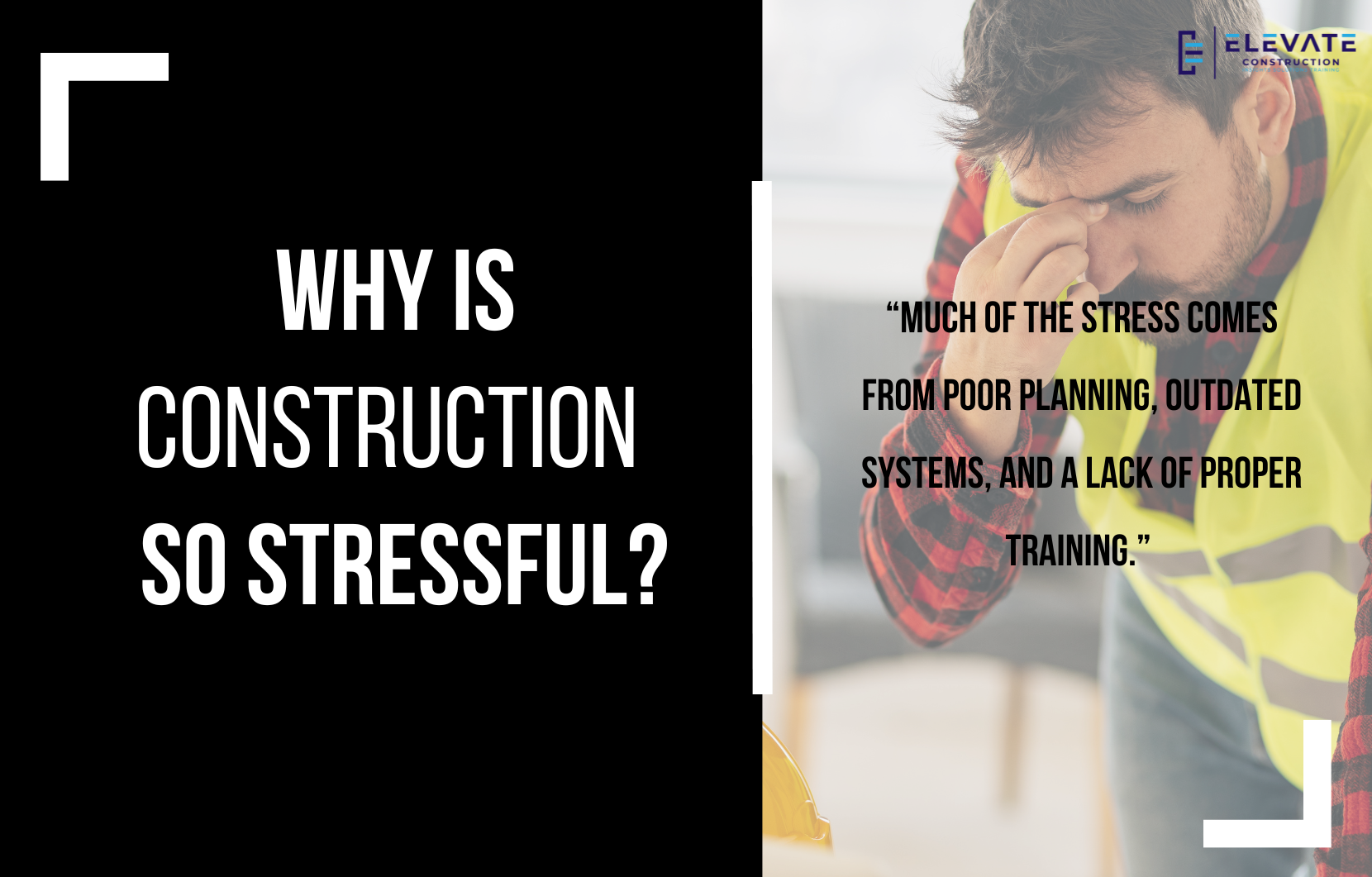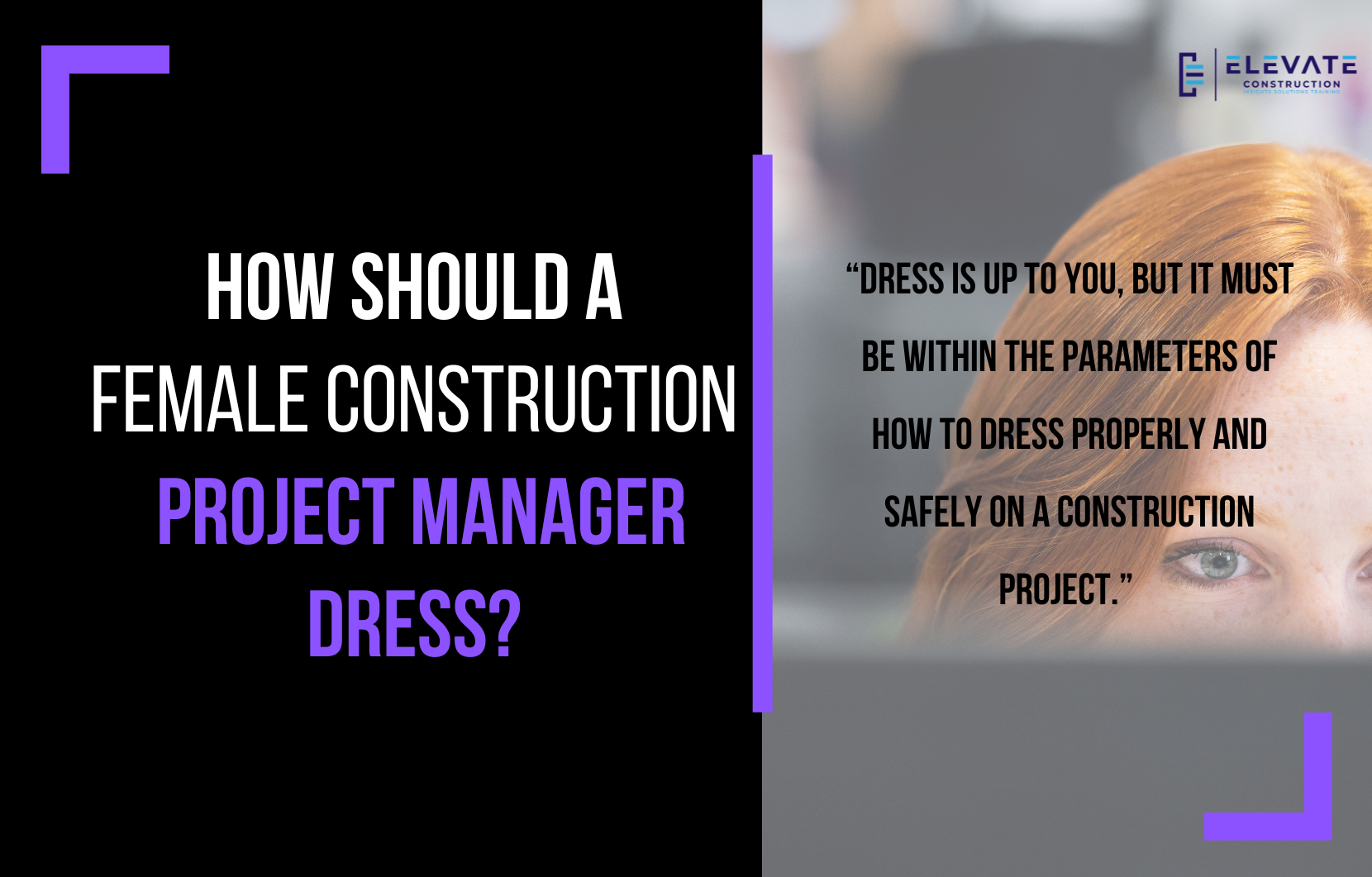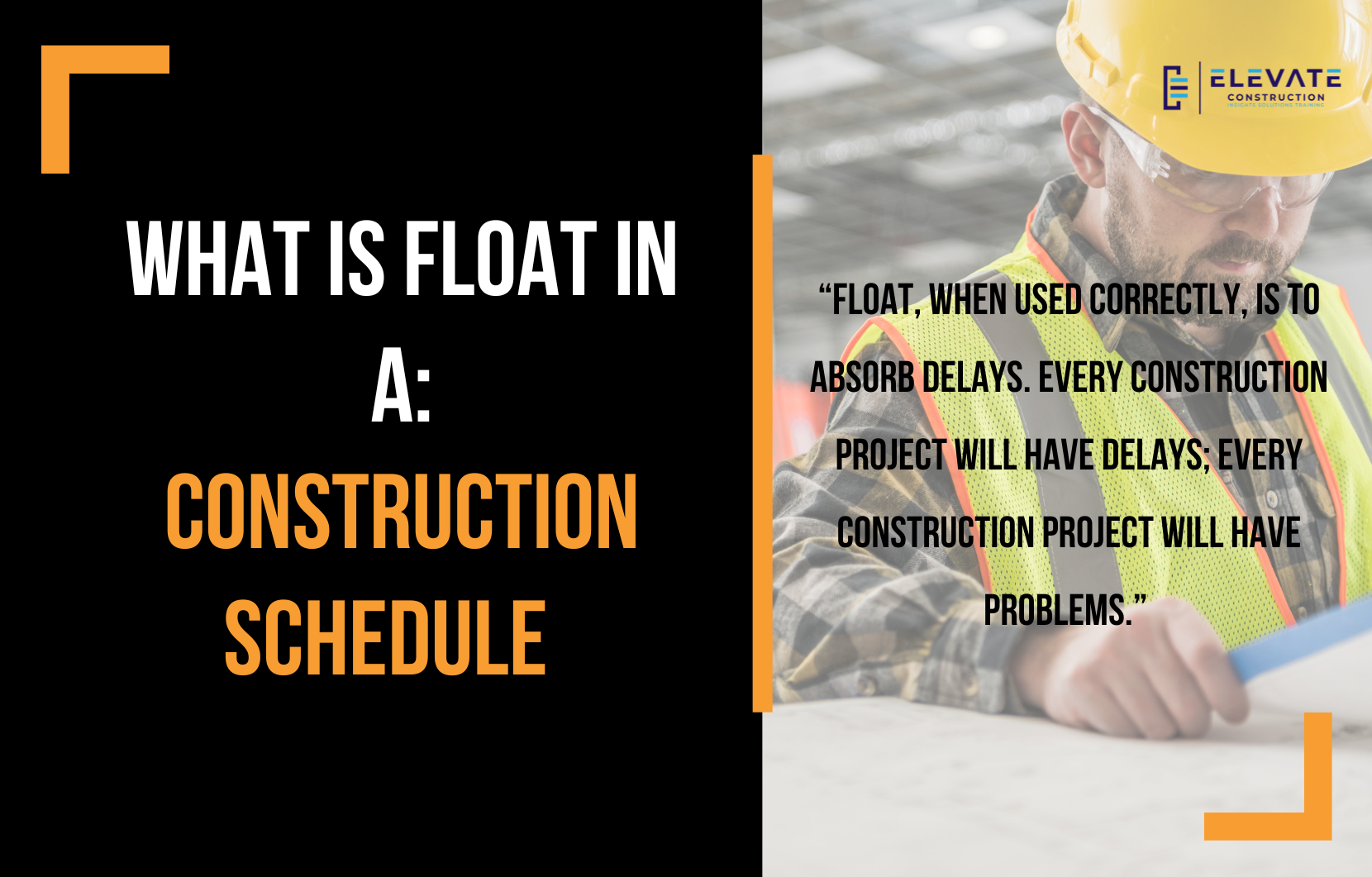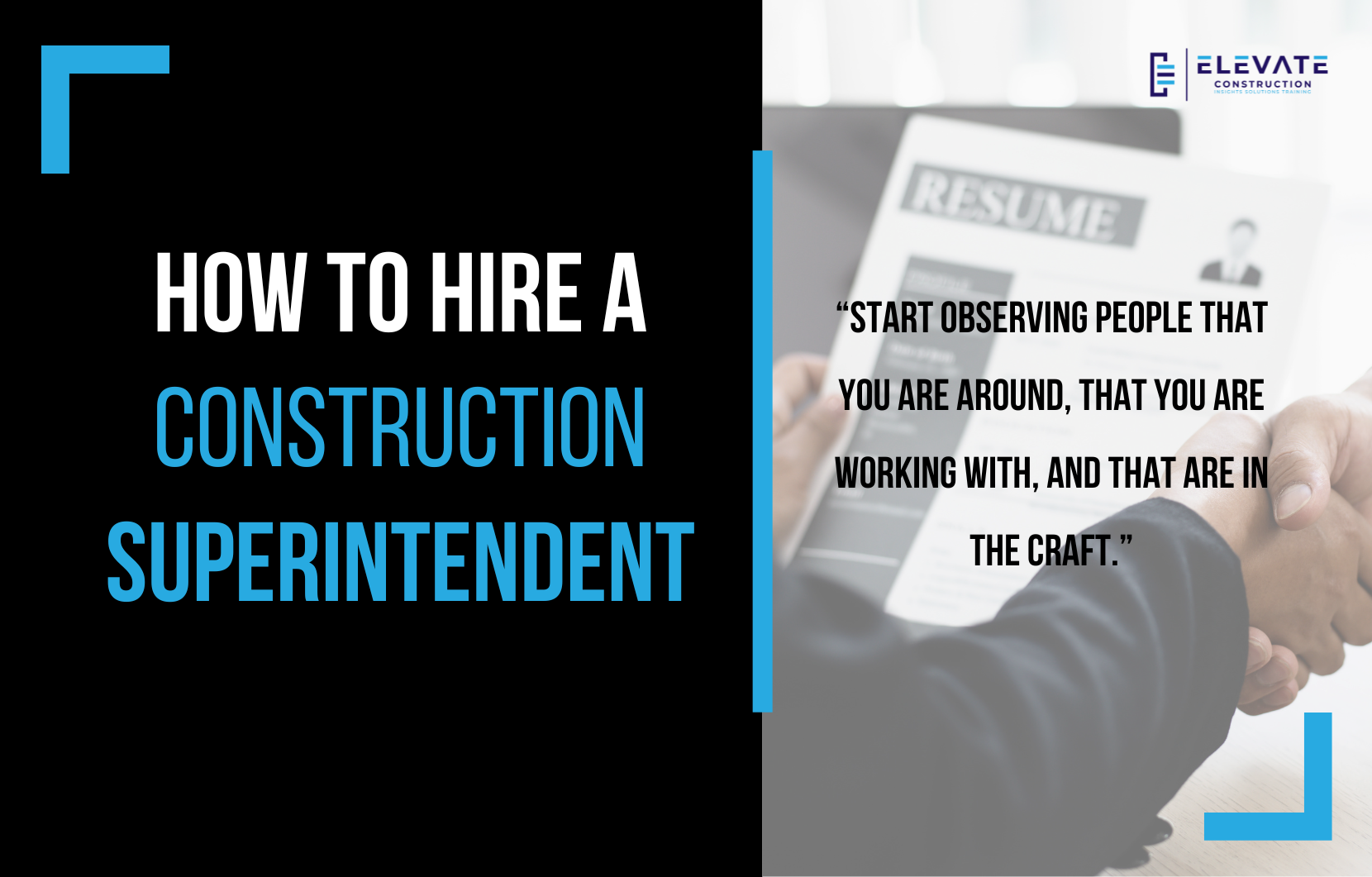In this blog post, we’re going to cover where to hire a construction superintendent and when you’re looking for him, here’s one thing that you shouldn’t count on. Two things you need to start doing that you probably aren’t right now. And we’re also going to cover the steps for developing those superintendents, and how long it takes. So read on if you want to know where to find the right talent for your construction projects.
What to Understand About Hiring from the Industry
You did not expect this, but do not count on hiring from the industry. It’s just not going to happen. Now, everybody out there, that’s already mad at me because I said that, I love you. I think you’re great, you’re probably at a good company with a good position, you’re trusted and you’re well cared for. Okay, so you’re probably not going anywhere, right? So I didn’t say you weren’t good. Right. There’s such a shortage of good superintendents because of the state of our industry that any of the good ones, and I’m assuming you are one of them, are already taken, right? You’re married to a company, right? So as a company, you’re not going to be able to go out and just find a super that has all of the traits that you’re looking for, you’re not going to be able to go out and find one with all the training, you’re not going to be able to go out and just plug and play superintendents into these positions. I don’t see it anywhere. And I’m not being insulting. I love superintendents. I don’t see any companies out there hiring from the industry and just making magic happen. Sure you get lucky every now and then. But on the whole, it’s not working very well. The best that I’m seeing is you hire folks from the industry, then people internally start to train on systems, and then it starts to go well, but it’s not just going to magically be like, hey, I’ll hire someone, plug them in, they got it, we’re good, it ain’t going to happen. So stop looking for unicorns in the industry that you can hire and put on your job and ignore.
Where to Hire a Construction Superintendent
What you need to start doing is hiring from trade schools. High schools, yes, I said it, colleges, and from the ranks of the craft on your project sites. And so that’s literally what I would do. In fact, that’s what we do at Elevate. Every now and then we get a unicorn, but it hasn’t happened like the percentage of how often that happens isn’t very good. You hit a home run like 5% of the time. What’s working at least 85% of the time for us in our company, Elevate, and Lean Takt is that we find college graduates, great people, or people from the trades who have a growth mindset, and they’re hard workers. We’ll just go ahead and hire them and train them to do it right from the start. It is a little bit of an investment, right? You have to spend like a year and a half, three years training them before they’re in certain positions. But I personally think that it’s worth it. So in three years, you can either be having the conversation of “hey, I don’t have the right people and we’ve spent a lot of money hiring and firing” or in three years, we can have the conversation “Hey, we started doing this recruiting in the right places and training these folks. And now we have some pretty good people supervising these projects.” Yes, it takes a couple of years. But let’s just think forward, what would your three-year-in-the-future self want to happen right now?
How to Find Potential Superintendents
1. Observe Your Surroundings
Start observing people that you are around, that you are working with, and that are in the craft. Yes, you’re going to hire from trade schools. Yes, you can do some hiring from high schools. And I’ve seen it work, I’m just telling you. Yes, you should be recruiting from colleges 100%. But also, if you’re working around really great laborers, really great foremen, surveyors, or other people in the industry, you can even look for potential amongst the ranks of truck drivers or the logistics folks. The key piece is that they have a growth mindset, are hardworking, and are willing to learn. Start paying attention to the people around you. Do they have that potential? Because I bet they do.
2. Gauge Their Interest
Once you spot them, gauge their interest. You can say something like, “Hey, there are some really neat opportunities. Here’s my number. If you’re interested, call me.” Or “I’m going to be around the project site for another week or two. Why don’t you think about this position or some of these opportunities I’ve talked to you about, and get back to me if you’re interested?” Provide an invitation and let them make the first move; that will show that they’re interested.
3. Explain the Possibilities
Once they come back to you, explain the possibilities. Tell them that superintendents or project managers can make a whole lot of money and these are really cool positions where they can grow as far as they want to. There are opportunities right here in this company. Explain what it pays and have that conversation about the opportunities.
4. Give Them an Assignment
This is not some kind of sick test or hazing. This is serious. What I like to do when somebody expresses an interest in taking their career all the way is to suggest a really cool book called “Construction Surveying and Layout: Third Edition,” also known as the Field Engineering Methods Manual. It covers field and office engineering tasks and responsibilities. Ask them to read chapters one through eight, if not the whole book. If they’re interested, they’re like, “Oh, well, yeah, this sounds interesting.” Then you know that there’s at least a chance. Because in that book, chapters one through eight, there are sections about construction organization, tools, general responsibilities, how you need to show up, math, drafting, surveying techniques, and safety and quality techniques. They will get a perspective of whether this sounds interesting or not. Giving someone an assignment is huge because it increases their likelihood to weigh in and buy into this content.
5. Hire Trainees as an Assistant
If they’ve read the book or done whatever assignment you’ve given them, and you think there is potential, find a way for them to help out in a field engineering role, project engineering role, or an assistant role on the project for a couple of months. If they’re a laborer, see if there’s a possibility for them to help in a field engineering role. If they’re a foreman, find time between assignments where they can come help you as an assistant superintendent. If they’re a surveyor, see if there are times when they can help you with certain tasks. The key is to get them involved in the kind of work you do. If they perform well, then you can have a conversation about promoting them to a field engineer or project engineer.
6. Provide a Full-Time Field Engineer Opportunity
If it goes through, get that person to do a full-time field engineering opportunity. Spending a year and a half to three years as a field engineer will be great. I don’t care what their experience is. You get that person into that role with the right opportunities, and they’re going to become builders, be able to work with builders, and it is going to catapult their career.
7. Send Them to a Field Engineering Bootcamp
Once they are a field engineer, send them to a company-run or an Elevate field engineering bootcamp. This is amazing. It will snap them out of any mediocre mindsets they have, teach them how to figure things out, connect them with the craft, and provide them with a life-changing, remarkable experience.
8. Give Them Time
Nobody’s in a rush. Spend a year and a half, 2, 3, 4, or even 5 years as a field engineer. They will get the builder experience and the tools in their tool belt to be able to do any other builder tasks that you ask them for later on. Take the time, and those eight steps have worked for me every time that I’ve tried it.
A Success Story
I’ve told you the story before about my buddy, Ramon Lugo Cruz. He came to a project in Tucson as the hoist operator and barely spoke English. I saw something in him. He connected with me. I was like, “Hey, if you take English courses for the next couple of months, because I think it’s great and I love your experience, so that you can understand the content that we’re going through, I will get you the Field Engineering Methods Manual.” In two months, he spoke good enough English, we connected, got him the book, read the chapters, got him into a position with the project team where he could start doing field engineering work. Then he started learning the equipment, doing lift drawings, running AutoCAD, and learning the robotic total station. Now he is the lead survey technician at a concrete company in Tucson, Arizona, making super good money and he can go anywhere in construction. This pattern works everywhere.
Once they’re done with this, all they have to do is learn about planning and scheduling, learn about lean systems, learn about leadership and communication, and the company systems. You have the makings of a future superintendent or project manager. It is amazing. This is a one-and-a-half to three, four, or five-year commitment, but it’s so worth it.
Learn More with These Resources
If you want to get started with this, I’m going to link you to the Field Engineering Methods Manual in the link below. I hope you check it out. Why don’t you buy a couple of them, have them there, and start looking for folks on your team, in high schools, trade schools, and colleges that you can start to train and develop. In a couple of years, you’ll have a rock-solid group of builders that are going to take you into the future. And I hope you’ve enjoyed this. Please check out the link for the Field Engineering Methods Manual, and I’ll see you on the next video.










